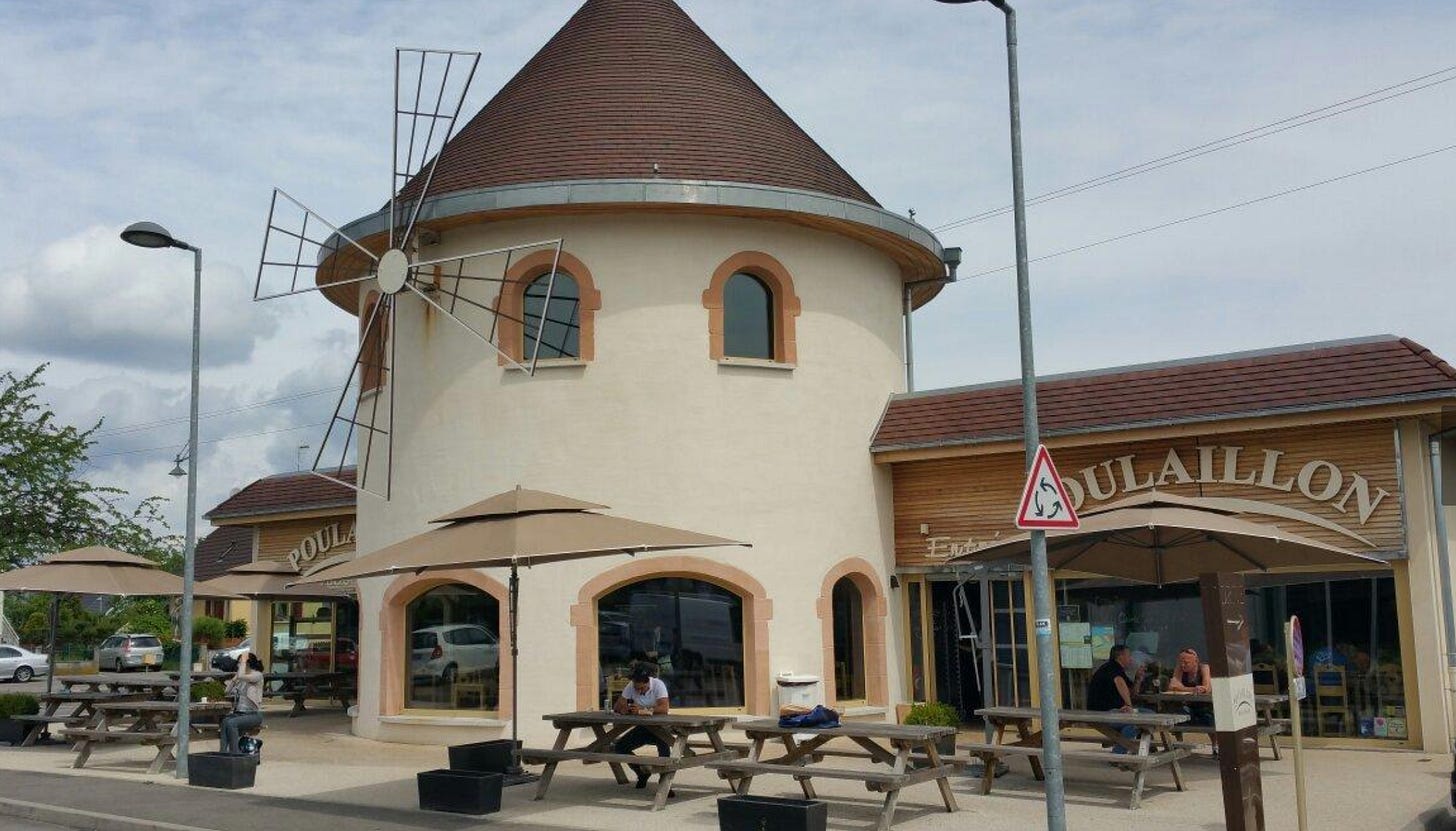My little French bakery chain Poulaillon just released its annual results and Q1 revenue updates. I had to spend time on it of course, as I was impatient for the results for a while! I am pleased with the results.
By the way if I send too many updates for you, sorry ! If you haven’t yet, I recommend that you make a “substack” keyword rule and create a substack folder. That way you will have most of your investment newsletters in one place, and they will not fill up your normal inbox. Then you will feel free to subscribe to many letters.
Then you can subscribe if you haven’t!
Allright, If you are not into French nanocaps now please skip and delete this email :)
Annual results as for Sept 30, 2021.
Better results. EBITDA up 66%.
Loss making segment water operational loss reduced at 1.2M. This was a year where terraces and indoor dining were closed half the time.
-debt is down with leverage ratio down but still high at 114% versus 144% last year as of Sept 30, 2020.
-no dividend will be declared this year.
Details on investment:
For the first time we got real details on Cash flow statement:
-”Creating and layout of restaurants”: 1.786 M Euros.
-”Buying leaseback option on the new production lines”: 2.432 M Euros.
-”Maintenance and renovation of tools and industrial facilities”: 2.332M + 0.164M euros for water.
-Various, holding company: 0.179M Euros.
In total we get:
Maintenance: 2.675 M euros.
Growth: 4.218 M euros.
création et l’agencement des points de vente (1 786) k€, l’exercice anticipé des options d’achats des lignes de productions financés par crédit-bail (2 432) k€, l’entretien et la rénovation des outils et locaux industriels BtoC (2 332) k€ et Eau (164) k€ et divers matériels affecté à l’activité holding (179 k€)
Further in the press release, they give some details on the group investments, in a new table called investments:
They do complex leaseback financing.
“A sale-leaseback enables a company to sell an asset to raise capital, then lets the company lease that asset back from the purchaser. In this way, a company can get both the cash and the asset it needs to operate its business.”
Investments in 2021:
New production line: “La ligne Moricette® of Saint-Vit” pour 3 893 k€, immediatelly sold as a leaseback. (GROWTH). This was completed in January 2021. It seems like it was a huge investment.
New production line: “lignes de production de Wittelsheim pour 1 340 k€” from 2012, where the remainder of the leaseback contract was bought in 2021.
Same for the Mineral water from 2016: “Pôle Eau Minérale pour 1 255 k€”, the remainder of the leaseback contract was bought in 2021.
Restaurants: 1 827 k€: They only opened two new stores during the year, but started investments in two windmill type restaurants to be opened in 2022, and the doubling of the size of a restaurant in Strasbourg (500k urban area) city centre.
The majority of Capex was actually the production lines and not the stores. This is more like a consumer goods (Pepsi, Mondelez) type of Capex in majority. I dont know if we will soon get in a more cash flow generative business now that the production line is completed, but in the future they will buy the remainder of the leaseback contract, so another 4 million investment is pending.
But these lease back contracts are actually as long term debt on the balance sheet and when they are paid back: “Pouf” (that is how we French speak) the debt disappears.. This company is giving me a headache! Ridiculously complex.
They do not mention the capacity utilisation with the new production line. But it is mentioned that it will double the capacity of the factory and I think that they have a lot of capacity to grow there.
Summary valuation
The Operating cash flow was 8 millions. The maintenance investments from the cash flow statements were 2.7 millions.
Estimated earning power is then 5.3 million, on a 24 million market cap, 22% earnings yield. This is with restaurants closed half the year!
A broker has actually come out with a price target of an about 45 millions market cap.
The year is marked with a lot of Exceptional income (insurance for covid closures) and charges. In the end they even each other out.
Last quarter sales report:
Large rebound, up 35% and reaching prepandemic levels.
-Water segment sales on the right track with a new order from a bio supermarket chain of 528 pallets or maybe 300k€.
-New Franchise shop opened.
Plans for 2022:
-complete new built of 2 big windmills like this picture:
-4 new restaurants but this time with franchise model. It will be interesting to see how this new franchise model frees cash flow.
Conclusion:
It looks like the company wants to de-lever and grow. Debt is down, Franchises, and no dividend this year. Water is getting better. I am happy with the results.
Some pictures
Sales to supermarkets products













Interview from the management talking about sales being good and water break even in 2-3 years (although their previous predictions in water business were wrong)
https://investir.lesechos.fr/actions/actualites/l-equilibre-d-ici-2-ou-3-ans-pour-le-pole-eau-minerale-de-poulaillon-2016410.php
Hey Olivier, it's hard for me to understand the french Financials but I want to provide you a few questions. do they include in depreciation and amortization their lease expenses?
Are those added back to the operating cash flow and then subtracted in the financing cash flow?
It seems that they own the properties, am I right? If that's the case, it would imply that their initial Capex for a new bakery are super high if they don't do a sale lease back with much lower Returns.
How many bakeries did they opened, so it would be possible to get to average Capex per new bakery and divide the existing bakeries to receive the maintenance Capex per bakery.
That should support your efforts to do some modeling.